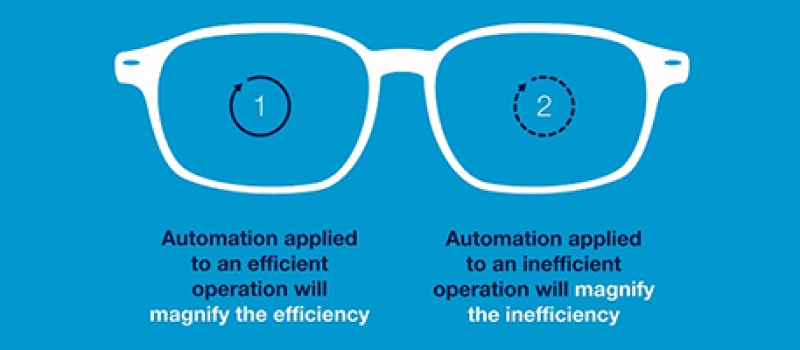Bill Gates is famously quoted with this notion: “The first rule of any technology used in a business is that automation applied to an efficient operation will magnify the efficiency. The second is that automation applied to an inefficient operation will magnify the inefficiency.”
Around our office, we take Gates’s maxim seriously. We do our best to stay on the lookout for incremental improvements regarding efficiency and quality in everything we do. When it comes to our cloud and managed IT services practice, we find efficiency NOT by cutting our costs, but rather by automating repetitive tasks (to free up brilliant minds) and finding ways to minimize the likelihood and impact of human error. As your business grows and you continue to improve what you do, finding those places to effect change gets difficult – not because you’re approaching perfection with your operations (we wish), but rather because a bigger operation has more complexity and interdependence among the functions, people, and processes.
When your business is small, switching a core business software tool isn’t so troublesome. As the metaphor goes, steering a small boat is easy. However, when your boat grows into a ship, things get trickier. Changes must be carefully planned. You cannot be as agile as you once were. It’s no secret that ITW has been growing fast – we’ve increased our team’s headcount by almost 40% in the last 6 months. But in today’s economy, in order to stay competitive and successful, your business (regardless of size) must be agile and committed to continuous positive change. It’s a delicate dance; balancing the need for careful planning with the need for swift innovation—always guarding against the creep of bureaucracy or corporate lethargy.
Late in 2015 we made a tremendous investment (and took some risk) in deploying a new set of Remote Monitoring and Management tools. This was no trivial move – we have RMM agents running on thousands of physical and virtual devices inside our cloud and all across Canada. This choice to switch tools wasn’t driven by the boardroom for the sake of cost cutting or in the pursuit of profit (of course, those things are also important). The major thrust behind this change came from our NOC Manager Neal and our Service Desk Team Leads; not our executives. Our bright folks wanted stronger tools to create custom scripts and workflows; to automate the growing list of “robot” tasks and to create more intelligent processes. They wanted to move away from just “managing systems” to “orchestrating” our cloud and managed IT services practice. They wanted to make our Service Desk team’s lives easier and enhance client experience. Although it was a technology tool decision, their goals were ultimately “people driven.”
We think 2 lessons emerged from our experience:
- Organizational change is most successful when it’s driven by the people whom it affects most. That means you need a healthy marketplace for ideas, where you folks are inspired (and incented) to find better ways to get stuff done and deliver great client experience.
- Careful doesn’t mean slow. You can steer a big boat effectively and quickly as long as you’ve planned your route and everyone is working together.




